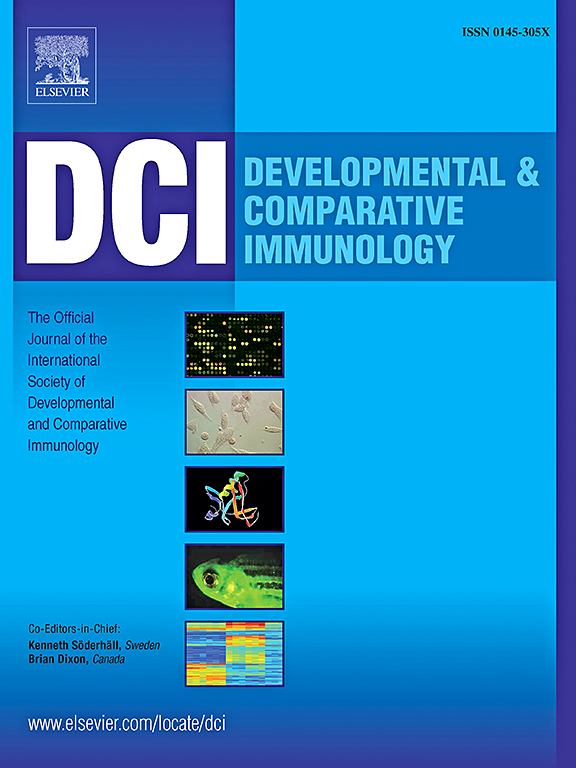Histological characterization of γδ T cells in cutaneous wound healing in Fraser's dolphins (Lagenodelphis hosei)
IF 2.7
3区 农林科学
Q1 FISHERIES
引用次数: 0
Abstract
Cetaceans exhibit remarkable wound healing capabilities. However, the specific immune mechanisms underlying this process, particularly the role of γδ T cells, remains largely unexplored. In ruminants, pigs, and camelids, which are members of the order Cetartiodactyla alongside cetaceans, γδ T cells express a unique receptor called workshop cluster 1 (WC1). Despite cetaceans also belonging to this order, the presence of WC1 in their γδ T cells has not yet been reported. This study aims to investigate the distribution and potential function of γδ T cells in cetacean skin during homeostasis and wound healing. Using immunofluorescence and immunohistochemical staining, we identified γδ TCR+ and WC1+ cells in dolphin skin for the first time. These cells are predominantly located in the dermis and blubber, with an increased presence in healing wounds, suggesting their involvement in wound healing rather than pathogen defense. Furthermore, our findings revealed that γδ TCR+ cells constitute a small fraction of CD3+MHCII+ cells in dolphin skin, indicating their intricate role in cetacean immunology. Additionally, the appearance of WC1+ cells in cetaceans highlights unique immunological features within Cetartiodactyla. Comparative analysis demonstrates that γδ T cells in dolphins exhibit distinctive morphological and distributional characteristics compared to those in humans, mice, and ruminants, implying species-specific adaptations. These insights contribute to a deeper understanding of cetacean immunology and underscore the potential evolutionary adaptations that support their exceptional wound healing capabilities. Future research on the genomic and functional aspects of γδ T cells in cetaceans is essential to further elucidate their roles in immune response and wound healing.
求助全文
约1分钟内获得全文
求助全文
来源期刊
CiteScore
6.20
自引率
6.90%
发文量
206
审稿时长
49 days
期刊介绍:
Developmental and Comparative Immunology (DCI) is an international journal that publishes articles describing original research in all areas of immunology, including comparative aspects of immunity and the evolution and development of the immune system. Manuscripts describing studies of immune systems in both vertebrates and invertebrates are welcome. All levels of immunological investigations are appropriate: organismal, cellular, biochemical and molecular genetics, extending to such fields as aging of the immune system, interaction between the immune and neuroendocrine system and intestinal immunity.

 求助内容:
求助内容: 应助结果提醒方式:
应助结果提醒方式:


